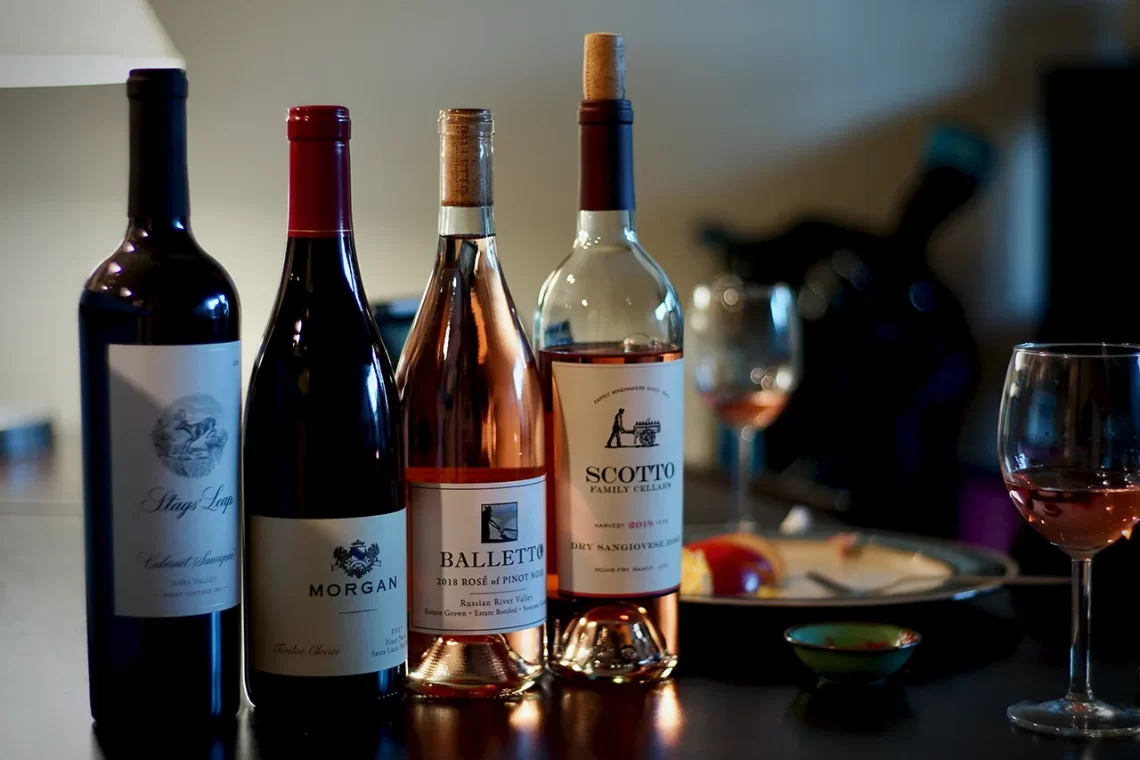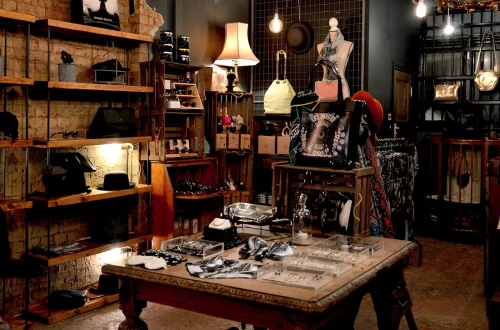
Wine Pairing Guide: Affordable Ways to Enhance Your Dining
Finding the perfect match between food and wine can turn an ordinary meal into something special. You don’t need to spend a lot to enjoy this experience. We’ll cover the basics of wine pairing, offering tips to help you elevate your dining experience without breaking the bank. Get ready to discover the secrets of wine pairing and enjoy the remarkable flavors that await your taste buds.
Wine Basics for Beginners
If you’re new to wine, shopping for it can be confusing. Here are some basics to help you get started:
- Types of Wine: There are three main types of wine: red, white, and rosé. Red wines are made from dark-colored grapes and have bold flavors. White wines are made from green or yellow grapes and are usually lighter and crisper. Rosé wines are made from red grapes but have a shorter fermentation time, giving them a pink color and a lighter taste.
- Sweetness Levels: Wines can be dry, off-dry, or sweet. Dry wines have little to no residual sugar, while sweet wines have more. Off-dry wines fall somewhere in between.
- Body: The body of a wine refers to its weight and richness. Light-bodied wines are more delicate, while full-bodied wines are richer and heavier.
- Acidity: Acidity gives wine its crispness and freshness. Wines with higher acidity are often described as zesty or tangy.
- Tannins: Tannins are compounds found in grape skins, seeds, and stems. They give red wines their structure and can make them taste a bit dry or astringent.
Understanding these basics will help you feel more confident when choosing a wine. Now, let’s dive into the world of wine pairing!
Understanding the Basics: Matching Flavors and Textures
The key to successful wine pairing is understanding how flavors and textures interact. Wine can either complement or contrast the flavors and textures in your meal, enhancing the overall taste experience. Let’s dive into the two primary approaches to wine pairing.
Complementary Pairing:
Complementary pairing means choosing a wine that has similar flavors to your dish. This way, the wine and food enhance each other. For example, a juicy steak with rich, savory flavors pairs well with a bold red wine like Cabernet Sauvignon or Malbec. These wines have strong flavors and tannins that match the intensity of the steak. Another example is pairing a creamy pasta with a buttery Chardonnay. The wine’s creamy texture complements the richness of the pasta, creating a harmonious taste.
Contrasting Pairing:
Contrasting pairing involves selecting a wine that has different flavors from your dish. This creates a balance and makes each bite and sip more interesting. For instance, if you’re serving a delicate fish, a crisp white wine like Sauvignon Blanc works well. The wine’s acidity cuts through the fish’s natural oils, providing a refreshing contrast. Another example is pairing spicy food with a slightly sweet wine like Riesling. The wine’s sweetness helps to cool down the spiciness, making the meal more enjoyable.
Where to Start
If this is all completely new to you, starting with complementary pairing is often easier. This approach is more straightforward because it involves matching similar flavors, which can be more intuitive. For example, pairing a juicy steak with a bold red wine like Cabernet Sauvignon or Malbec is a great starting point. The rich flavors of the wine and the steak complement each other, making it a satisfying and enjoyable experience. Once you feel more comfortable, you can experiment with contrasting pairings to add more variety and excitement to your meals.
Exploring Flavor Profiles: The Building Blocks of Wine Pairing
To make informed choices, it’s essential to familiarize yourself with different flavor profiles commonly found in wines. Here are a few key terms to guide you:
- Acidity: Wines with higher acidity, such as Sauvignon Blanc or Riesling, can pair well with dishes that have tangy or acidic components, like citrus-based seafood or vinaigrette-dressed salads. The wine’s acidity complements and balances the flavors, preventing it from being overwhelmed.
- Body: Referring to the weight and richness of a wine, body plays a crucial role in pairing. Light-bodied wines like Pinot Noir or Vinho Verde work well with delicate dishes like grilled chicken or vegetarian fare. On the other hand, hearty reds like Syrah or Cabernet Sauvignon are a match made in heaven for robust dishes such as braised meats or stews.
- Sweetness: When it comes to pairing sweet wines, desserts are an obvious choice. However, semi-sweet wines can also beautifully accompany spicy dishes, as the residual sugar counterbalances the heat. Next time you’re indulging in spicy Asian cuisine, try an off-dry Riesling or Gewürztraminer to heighten the experience.
Navigating the World of Affordable, High-Quality Wine: A Shopper’s Guide
Finding affordable yet good quality wine is not only a smart way to expand your wine collection but also a testament to the notion that great taste doesn’t have to come with a hefty price tag. With a few handy tips, you can navigate the aisles of wine shops or peruse online selections to discover hidden gems that offer remarkable value for your money. Here’s a shopper’s guide to help you find affordable, high-quality wine that will satisfy your palate without emptying your wallet.
Explore Lesser-Known Regions and Varietals:
Instead of focusing solely on popular wine regions like Napa Valley or Bordeaux, try exploring lesser-known areas. Countries like Argentina, Chile, Portugal, and South Africa often produce exceptional wines at more affordable prices. Similarly, explore unique grape varietals beyond the usual suspects like Cabernet Sauvignon or Chardonnay. You might stumble upon a delightful Garnacha from Spain or a refreshing Grüner Veltliner from Austria. These lesser-known wines can offer great value for money and introduce you to new flavors.
Seek Out Boutique Wineries:
While larger, well-known wineries may have higher price points, smaller boutique wineries often offer quality wines at more accessible prices. Boutique wineries are smaller, typically family-owned operations that focus on craftsmanship and attention to detail. These hidden gems can be found in various regions and often prioritize quality over quantity. Look for local wine shops or online retailers that specialize in sourcing wines from boutique wineries. This allows you to explore distinctive and affordable options.
Embrace Off-Vintages:
Off-vintages refer to years when the weather conditions might not have been ideal for winemaking, resulting in lower demand and potentially lower prices. However, this doesn’t mean the wines are of poor quality. In fact, some off-vintage wines can surprise you with their character and complexity. Do a little research, read reviews, and don’t shy away from trying wines from off-vintages. They can offer excellent value for money and unique tasting experiences.
Look for Second Labels and House Wines:
Many well-established wineries have second labels or produce house wines that are often more budget-friendly than their flagship offerings. Second labels are wines made by the same winery but sold under a different name. They are usually made from grapes that didn’t make it into the top-tier wines but are still of good quality. House wines are often produced by wineries specifically for restaurants or wine shops to sell at a lower price. These wines can be just as enjoyable and well-crafted, providing an affordable entry point to a reputable winery’s portfolio. Look for these second labels or house wines, as they can provide exceptional value without compromising on quality.
Take Advantage of Sales and Discounts:
Keep an eye out for sales, promotions, and discounts from wine retailers. Many shops offer regular discounts or clearance sales to make room for new inventory. Join mailing lists or follow wine retailers on social media to stay informed about these opportunities. Additionally, consider buying in bulk or mixed cases, as they often come with discounted prices per bottle. Retailers like Costco, Trader Joe’s, and Grocery Outlet often have great deals on quality wines. This way, you can stock up on your favorite wines without breaking the bank.
Seek Expert Advice and Ratings:
Don’t hesitate to seek advice from knowledgeable staff at stores and wine shops or reach out to sommeliers for recommendations. They can guide you towards hidden gems and budget-friendly options based on your taste preferences.
Additionally, magazines like Wine Spectator offer reviews and grading that take a lot of the guesswork out of finding good wines. Websites like Wine Spectator, Wine Enthusiast, and Vivino provide ratings and reviews that can help you make informed choices. Exploring their suggestions can lead you to new and exciting wines that align with your budget.
In Vino Veritas: Putting Your Knowledge to Use
Going on a food adventure isn’t just about enjoying tasty dishes. It’s also about finding the perfect wine to go with them. We’ll show you common dinner foods and their best wine matches. From juicy steaks to sweet desserts, get ready to discover flavors that work perfectly together. Let’s dive into these wine pairings and make your meals even better.
Meals:
- Grilled Steak: Pair a juicy grilled steak with a bold, full-bodied red wine such as Cabernet Sauvignon, Malbec, or Syrah. These wines have enough richness and tannins to complement the savory flavors of the steak.
- Roasted Chicken: For roasted chicken, a versatile white wine like Chardonnay or a light red wine like Pinot Noir works well. The Chardonnay offers a buttery richness that complements the chicken’s flavors, while the Pinot Noir adds a touch of elegance without overpowering the dish.
- Grilled Salmon: Opt for a crisp and refreshing white wine like Sauvignon Blanc or a dry rosé to pair with grilled salmon. The wine’s acidity cuts through the fish’s natural oils, creating a harmonious balance of flavors.
- Pasta with Tomato Sauce: A medium-bodied red wine like Sangiovese or Chianti pairs excellently with pasta dishes featuring tomato-based sauces. The wine’s acidity complements the acidity in the tomatoes, enhancing the overall flavor profile.
- Spicy Asian Cuisine: When enjoying spicy Asian dishes like Thai curry or Szechuan stir-fry, reach for an off-dry Riesling or Gewürztraminer. These slightly sweet white wines help tame the heat while providing a delightful contrast to the spices.
- Roasted Vegetables: For roasted vegetable dishes, consider a light red wine like Beaujolais or a medium-bodied white wine like Viognier. These wines offer a balance of fruitiness and acidity that complements the natural sweetness and caramelization of the roasted vegetables.
- Cheese Platter: When indulging in a cheese platter, explore the world of fortified wines like Port, Sherry, or Madeira. The richness and complexity of these wines beautifully complement a variety of cheeses, from creamy Brie to sharp Cheddar.
Remember, these pairings serve as general guidelines, and personal preferences may vary. Don’t be afraid to experiment and discover your own unique combinations.
Desserts:
- Chocolate Cake or Brownies: Pair rich, chocolate desserts with a full-bodied red wine like Cabernet Sauvignon or a fortified wine like Port. The wine’s bold flavors and tannins complement the intensity of the chocolate, creating a decadent pairing.
- Cheesecake: A creamy and luscious dessert like cheesecake pairs well with sweet, dessert wines such as Sauternes or Late Harvest Riesling. The wine’s honeyed sweetness and acidity provide a delightful contrast to the richness of the cheesecake.
- Fruit Tart or Pie: For desserts featuring fresh fruit, consider a semi-sweet or off-dry white wine like Moscato d’Asti or Gewürztraminer. These wines enhance the fruit flavors and add a touch of sweetness without overwhelming the delicate nature of the dessert.
- Crème Brûlée: The classic French dessert crème brûlée pairs beautifully with a medium-bodied dessert wine like Muscat or a sweet sparkling wine like Demi-Sec Champagne. The wine’s floral and fruity notes complement the creamy custard and caramelized sugar on top.
- Apple Pie or Apple Crisp: Pair apple-based desserts with a medium-bodied white wine like Riesling or a light, fruity red wine like Beaujolais. These wines showcase the apple flavors and provide a refreshing balance to the sweetness of the dessert.
- Vanilla Panna Cotta: The delicate flavors of vanilla panna cotta are wonderfully accompanied by a slightly sweet white wine like Moscato or a light and floral dessert wine like Moscato d’Oro. These wines enhance the creaminess and highlight the subtle vanilla notes.
Example Meals for Date Night:
Meat Option: Grilled Steak with Red Wine
For a simple yet impressive meal, grill a juicy steak. Pair it with a bold red wine like Cabernet Sauvignon or Malbec. The rich flavors of the wine and the steak complement each other perfectly. Serve with a side of roasted vegetables or a fresh salad.
Vegetarian Option: Pasta Primavera with White Wine
For a delicious vegetarian option, make pasta primavera with fresh vegetables. Pair it with a crisp white wine like Sauvignon Blanc or Pinot Grigio. The wine’s acidity balances the flavors of the vegetables and pasta. Add a sprinkle of Parmesan cheese for extra flavor.
Raise Your Glass: Unlocking the Secrets of Wine Pairing on a Budget
You now hold the key to unlocking the secrets of wine pairing without emptying your pockets. By understanding flavor profiles, exploring complementary and contrasting pairings, and seeking out hidden gems from lesser-known regions, you can elevate your dining experience to new heights of sophistication. So, next time you’re hosting a dinner or treating yourself to a home-cooked meal, don’t forget to select the perfect wine companion.
By understanding flavor profiles, exploring complementary and contrasting pairings, and seeking out hidden gems from lesser-known regions, you can elevate your dining experience without breaking the bank. Cheers to discovering the perfect wine pairing and enjoying every sip along the way!






